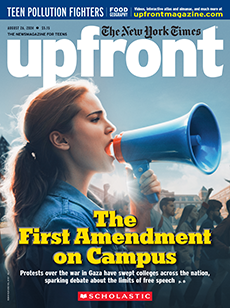1. Set Focus
Pose this essential question: What has prevented lasting world peace??
2. List Vocabulary
Share some of the challenging vocabulary words in the article. Encourage students to use context to infer meanings as they read.
- envisioned (p. 19)
- hierarchy (p. 19)
- armistice (p. 20)
- stymied (p. 21)
- isolationists (p. 21)
- turmoil (p. 21)
3. Engage
Have students share examples of conflicts that come up among members of the sports teams and clubs they belong to. Ask: How are those conflicts resolved? Who holds power in resolving the conflicts? Then explain that the article is about an organization, the United Nations, that has the purpose of resolving international conflicts.
